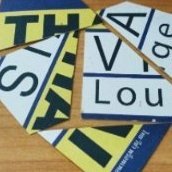Rescued snorkeller stabilized, returns to Canada by air ambulance
-
Recently Browsing 0 members
- No registered users viewing this page.
-
Topics
-
-
Popular Contributors
-
-
Latest posts...
-
2
Crime Two Myanmar Men Stab Each Other to Death in Phuket Over Love Rivalry
some women do it on purpose to get men to fight over them. not worth it. just walk away and find another woman. -
153
Crime British Man Faces 21-Year Sentence for Human Trafficking
If the guy in the picture is the criminal, he will be way slimmer when he gets out in 2 years. 555 -
32
Leaving the country when you are overstaying.
i understand from his post he will soon be trying to leave! -
62
USA Trump's Summer Surge: Wins at Home and Abroad Mark a Golden Moment for the President
Depends who he puts up as candidate. Musk cannot run. There are some current politicians mentioned, including those who voted against the Big Bastard Bill but also loonies such as MTG and Laura Loomer. If Musk is true to his word, which implies a socially liberal, fiscally conservative (which is the middle ground of most countries; careful with your money, but live and let live for the lives of others), these loons won't feature. That the Mooch has expressed interest; the guy is very intelligent, and his discussions with Rory Stewart (another middle grounder Tory) and Alastair Campbell, are illuminating and enjoyable. Of course, he might be another Wall Street grifter, albeit a self-made one. Trump could croak any day. The usual mantra is that third parties never stand a chance in the Winner Takes All American system. But remember, the Republican Party itself was a third party, formed as an anti-slavery party, which took advantage of divisions within the Whigs. Within 6 years of being founded, the Republican Party had a President. The 1856 election was a 3 way, with the Whigs replaced by the Know Nothings. Probably need a rethink on the party name. The last time The American Party contested an election: -
171
US Pushes Forward with Private Aid Plan for Gaza Amid UN Opposition
Isn't it obvious ? Hamas takes the donated free food and then sells the food UNRWA pays Palestinians in US $ and Hamas control the money exchange booths and Hamas take 10 % to exchange the money -
3
THAILAND LIVE Thailand Live Monday 7 July 2025
Child Hospitalised After Consuming Cannabis-Infused Gummies Left Behind at Birthday Party Picture courtesy of Matichon. A two-year-old girl was rushed to hospital after accidentally consuming cannabis-infused gummies left unattended in her home following a birthday party. The child’s parents have now spoken out to warn others, as they grapple with medical bills and concerns over lasting health effects. Full story: https://aseannow.com/topic/1365865-child-hospitalised-after-consuming-cannabis-infused-gummies-left-behind-at-birthday-party/
-
-
Popular in The Pub












.thumb.jpg.2390942dba698ccc87b36df4ddc7fb65.jpg)



Recommended Posts
Create an account or sign in to comment
You need to be a member in order to leave a comment
Create an account
Sign up for a new account in our community. It's easy!
Register a new accountSign in
Already have an account? Sign in here.
Sign In Now